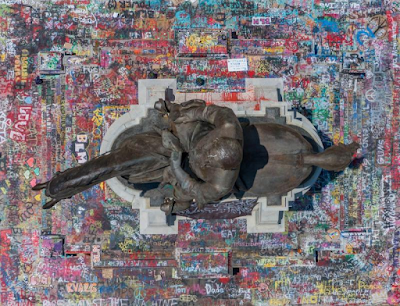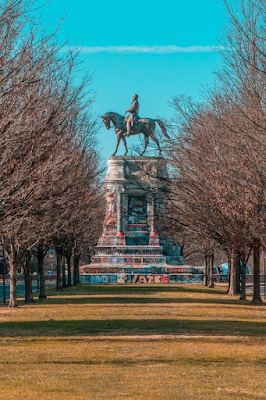July 28, 2023
BOSTON —
Ted Landsmark and Stanley Forman met up with WCVB's Brittany Johnson at Boston's City Hall Plaza, where the incident took place.
As Landsmark walked across the plaza, he reflected back to the day a group of protestors attacked him. Landsmark was kicked, hit in the face, and suffered a broken nose. One of the protesters swung the American flag in his direction to use it as a weapon.
"Ironically, on the day when the assault took place, I was on my way to a meeting in City Hall to discuss how the city could open up more job opportunities to contractors of color and to workers of color in the city," Landsmark, who was a young lawyer at the time of the attack, told Johnson.
"I had no expectation that I would encounter a crowd of anti-busing demonstrators," he said. "My mind was fixed on creating opportunities and jobs for young people in the city."
During this time period, Boston was fraught with discrimination and uproar over court-ordered school desegregation.
"Boston half a century ago was fraught with all kinds of discrimination," Landsmark explained. "It affected housing. It affected the police department. It affected schools. It affected our transportation system. Redlining had been in place and had made it virtually impossible for African-Americans to be able to live where they wanted to live in the city. The transportation system was one that discriminated in terms of employment. It was a place that was very uncomfortable for people of color, and African Americans in particular, to live and to have opportunities for career growth and opportunities to really take advantage of all of the educational opportunities that exist within the city."
With the racial climate at the forefront, Landsmark said he knew the attack could transcend into a way for him to speak to larger issues of the civil rights movement.
"From the moment I was attacked in City Hall Plaza, I knew that I was going to be placed in a position to have an opportunity to talk about the issues of race and of access to jobs and education that existed within this region. It was clear to me that people of color, and African-Americans in particular, had been discriminated against for generations, and that at that moment, there was an opportunity for me to have a platform to address those issues in the context of bussing as it was taking place in the city," he said.
The Pulitzer Prize photograph, titled "The Soiling of Old Glory," was taken by photojournalist and former NewsCenter 5 videographer Stanley Forman.
"The day I took that picture, I didn't get — I tell everybody, I didn't get the impact of it. I mean, I ran down and continued on the coverage. They left here (City Plaza), and I just followed them," F0rman said.
"When did you realize the magnitude of what you had?" Johnson asked Forman.
"I think when we were in the office, and the editors were looking at it, and I was looking at it, and they were so frightened it would start a race war," Forman replied. "I think that's when I realized how bad it was. It took a few hours for me to catch on."
"What Stanley and I have realized over time is that the photograph provides an incentive, a platform for us to raise issues around race in the city, not only in terms of what happened in the 1970s but more importantly in terms of what is happening now as we look forward with new generations of individuals who are addressing these same issues of racial justice," said Landsmark.
Landsmark, a long-time civil rights activist and now a professor of public policy at Northeastern University, said Boston has come a long way but said work still needs to be done to achieve racial justice.
"There's been a great deal of change in the city, primarily in the public sector. Our city council is elected and is composed primarily of people of color. For the first time, we have a person of color as mayor within the city, and we've made significant advancement in many of our public sector areas, but we have a huge amount of work to do in the private sector. Our financial services area, our high-tech companies, our universities, our biotech firms all need to do considerably more to open up job opportunities for young people of color in and around the city and need to use their private sector resources and capital to develop job training programs and career opportunities for people within the city," said Landsmark.
"In 2023, did you think you'd still be speaking about achieving racial justice?" Johnson asked Landsmark.
"I was perhaps naïve in believing that by 2023 we would be much further along not only in Boston but nationally in terms of achieving racial justice, in terms of achieving opportunities for African-Americans to be able to be professionals and homeowners and to maintain stability within their families. And it's a little disappointing that we're still struggling today with many of the same issues that we faced in 1976 when I was attacked on City Hall Plaza," he said.
Just down from City Hall Plaza, the NAACP convention was getting underway.
It has been over 40 years since the annual convention was held in the Commonwealth, and Landsmark hopes that the return of the national convention to the city will serve as a tide change in Boston's history.
"Boston is definitely ready to take advantage of this moment, in part because our elected officials have embraced social change, in part because the demographics of who is living in the city have changed so significantly, and in part, because we understand that the future of the city is dependent on the success of people of color in the greater Boston area," Landsmark said.
The message of the 114th National Convention is "Thriving Together," which is something Landsmark and Forman know a thing or two about, as they are forever attached to the story of "The Soil of Old Glory."
"People have asked me whether I thought Stanley should have intervened somehow," Landsmark shared, as he was standing beside Forman. "And I think that in doing his job of taking the photo at that moment, he contributed to the kind of dialog that we need to have not only in Boston but around the country, around the implications of hate and racial violence and what it is we need to think about doing to eliminate both."







